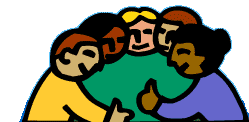Copying and Pasting (clipboard explained)
Copying and pasting is a very useful skill. You can copy and paste either images or text. However it is important to remember that while a computer makes this very easy do not forget that the original author must be given credit. If credit is not given to the original author then plagiarism has been committed. Copying and pasting makes citing sources easier than ever, so remember if you copy something that is not your original work, copy the URL where you copied the information along with any available information about the source and/or author.
The whole idea behind copying and pasting on a PC is to select the item you want to copy (this can be as small as a single letter or an article many pages long). I will refer to text for the remainder of this article but the same procedure works for most pictures too. In fact most computer folders and programs can be moved or duplicated in this same manner.
Select (highlight) the text you want to copy then right-click on the highlighted text. An "edit" menu will appear. Click "copy". Next display the file, or document where you want to place this information. This destination can be in same document file or in another program entirely. When the place where you want to place the copied material is on you screen, place your cursor where you want the copied item to display, right-click and select "paste" from the edit menu that displays. The information you have copied ought to appear.
There are two other ways to copy and paste. They work fine and sometimes one method is handier than another.
For all methods, the text or image you want to copy must be selected then either
click the "edit" button. It is next to the "file" button in the window where you are working. Select "copy".
Or
Use your keyboard. First hold down the control (ctrl) button and then type the letter "c". This will copy your material to your clipboard.
The clipboard is sort of an imaginary thing. I am sure there is a lot of engineering behind it but for the casual computer user the main thing to understand it that the clipboard is what the computer carries the copied material on. You never really see its contents unless you paste it somewhere. When you close a program after you have used the copy and paste function a lot you may be asked if you would like to keep the large amount of information. If you are done with it just say no.
The alternate methods of pasting are similar to the alternate methods of copying.
Display the place where you want to paste the copied material. Left click on the spot where the material is to be copied. This is your insertion point and the stuff you copied will drop right in where you click.
Click the edit button. Select paste
Or
Using the keyboard, hold the control (ctrl) button down and the type "v". "V" stands for paste, right?
Sometimes you just have to laugh! There are so many key stroke combinations for things you can do on the computer that it is impossible for me to even be aware of all of them much less remember them all. You can find most of the keystroke combinations in text books relating to the particular application or program you are using. Another way to find often used keystroke combinations is to take a careful look at the command when you select it from a menu. Often it's keystroke equivalent is written next to it. For example, if you click file, you will see a list of commands. Next to many of these commands is their keyboard equivalent. For instance, to save using your keyboard only, click "crtl" and then type "s". One note, the keystrokes will not work if the menu is dropped down.
